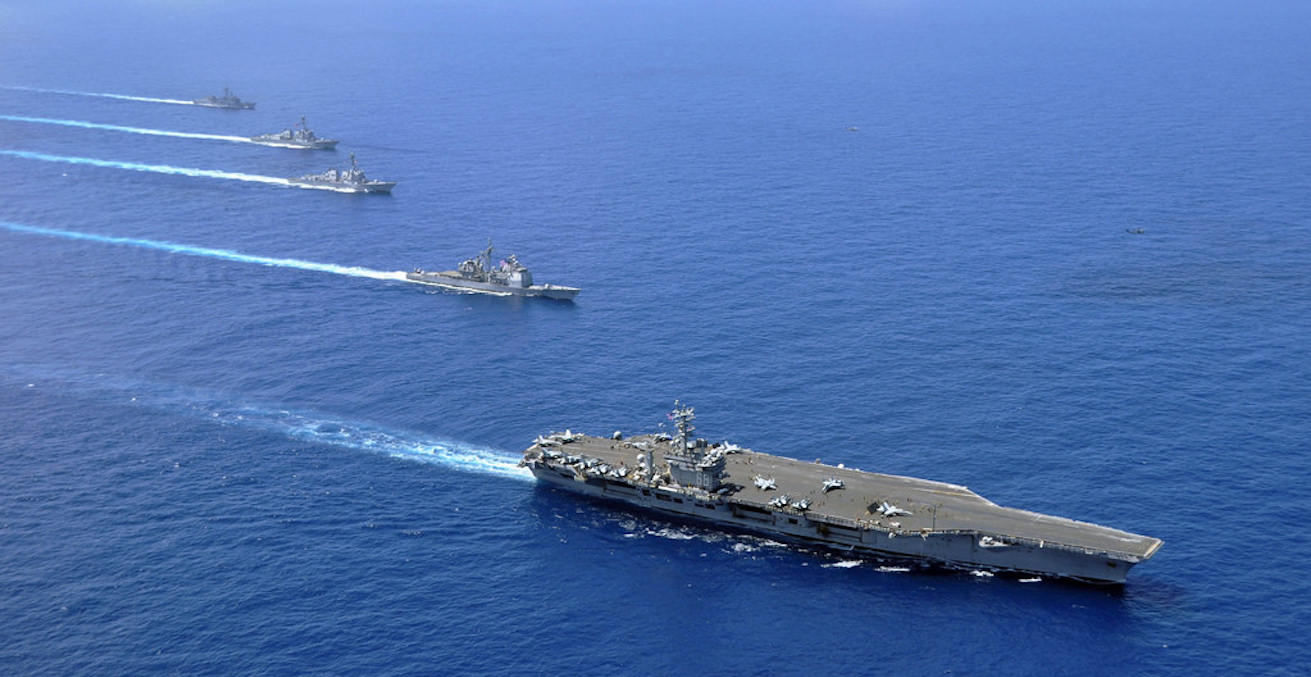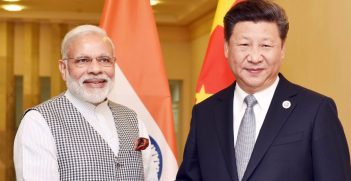Between War and Peace: Grey-Zone Operations in Asia

Recent grey-zone activity in maritime Asia suggests an increase in hybrid warfare. The lines between military, economic, diplomatic, intelligence and criminal means of aggression are becoming increasingly blurred.
Of the many unconventional challenges in the maritime realm, grey-zone operations are perhaps the most difficult. The grey-zone is a metaphorical state of being between war and peace, where an aggressor aims to reap either political or territorial gains associated with overt military aggression without crossing the threshold of open warfare with a powerful adversary. The ‘zone’ essentially represents an operating environment in which aggressors use ambiguity and leverage non-attribution to achieve strategic objectives while limiting counteractions by other nation states.
The leading purveyor of grey-zone tactics in maritime Asia is China’s irregular maritime militia, dubbed the ‘little blue men’. It seeks to assert and expand Chinese control over an increasingly large area of disputed and reclaimed islands and reefs in the strategically important South China Sea. The militia, comprising hundreds of fisher-folks in their motorboats as well as China’s paramilitary forces, operates mainly out of Chinese-held islands in the South China Sea and has been involved in buzzing US navy ships and those of neighbouring countries with rival territorial claims.
The idea behind Chinese militia operations is to exert authority over a maritime space using civilian craft and personnel, but to do it in a way that precludes open military confrontation. By acting assertively and unprofessionally in close proximity to other states’ maritime forces, China’s coast guard boats and fishing vessels seek to assert dominance in areas surrounding disputed features. Their activities are consciously kept below the brink of conflict, but effectively demonstrate China’s claims over disputed features.
After Chinese maritime militia assisted in the seizure of the Scarborough Shoal in 2012, Beijing has since sought to expand its operations in the South China Sea. Beyond asserting territorial claims, China’s irregular forces have also been used to deter US freedom of navigation operations (FONOPS) in the South China Sea. Notably, even as the Chinese militia has been professionalised, it has maintained an ambiguous civilian affiliation, enabling Beijing to plausibly deny grey-zone activity.
China has also resorted to illegal reclamation of features in the South China Sea, gradually militarising artificial islands in a bid to establish de-facto control over the surrounding waters. In effect, the irregular tactics have allowed China to undermine international law, and set precedents in its favour.
While the focal point of China’s irregular warfare is the South China Sea, the East China Sea too has witnessed a significant amount of militia activity. Following Japan’s nationalisation of three uninhabited islets in the Senkaku group of islands in September 2012, Chinese government vessel activity in the East China Sea has registered a significant rise. In August 2016, China demonstrated the effectiveness of grey-zone operations by sending more than 200 Chinese fishing vessels into the Senkaku seas, providing a glimpse of what Beijing’s long-feared, potentially escalatory grey-zone tactics were capable of achieving in a distant Japanese-dominated littoral.
Grey-zone operations in South Asia
While much of the debate around grey-zones involves Chinese irregulars in East Asian waters, South Asia has had its own share of hybrid attacks. In August 2014, the South Asian wing of al-Qaeda staged a brazen attack on Pakistan’s naval dockyard in Karachi, in an attempt to seize the warship, PNS Zulfiqar.
The Karachi dockyard attack was eerily similar to another assault in 2011, when radicalised elements of the Pakistan navy joined hands with al-Qaeda to organise a hit on the PNS Mehran, the PN’s premier naval air-station in Karachi. The attack had followed failed talks between the Pakistan Navy and al-Qaeda over arrested navy personnel with suspected links to the militant organisation.
The most diabolical demonstration of grey-zone operations in South Asia, however, came in the form of the 26 November 2008 attack on Mumbai. Ten heavily armed Pakistani terrorists, supported by Pakistani intelligence agencies entered India’s premier coastal metropolis via the sea-route, running rampage and killing 166 people while injuring more than 300. The attacks roused the Indian maritime security establishment from its complacency, leading to a significant strengthening of coastal security measures.
China’s three warfares
New Delhi has had to contend with another form of Chinese grey-zone operations in South Asia, a tactic that does not involve non-state actors or kinetic attacks. For the past decade, China is known to have actively used the three warfares (3Ws) strategy—media, psychological and legal warfare—to weaken Indian resolve in South Asia and the Indian Ocean Region. The Chinese 3Ws strategy goes beyond propaganda wars and misinformation campaigns. Expanding conventional war dynamics into the political domain, the 3Ws aims to undermine India’s organisational foundations and military morale. A slow-moving and surreptitious ploy, the strategy is designed to subdue India without ever needing to fight.
China’s preferred instrument against India is psychological warfare. The peacetime applications of psychological operation techniques involve the use of coercion to influence and alter New Delhi’s decision-making calculus. The Communist party media mouthpiece Global Times’ not-so-subtle op-eds regularly seek to shape Indian opinion, creating doubts and fomenting anti-leadership sentiments.
In a maritime context, an overt example of a psychological operation was the incident in July 2011 in which a Chinese source is supposed to have issued a warning to an Indian warship, INS Airavat, operating off the coast of Vietnam. China did not take responsibility for the act but it was more than clear to all actors concerned where the warning had emanated from, who it targeted, and what it was meant to convey.
An uncertain future
While full-scale warfare remains improbable, powerful nations are likely to continue to exploit the grey-zone between war and peace to ensure the balance of forces continues to remain in their favour. For states unaccustomed to this mode of warfare, the challenge will be to prepare to counter subtle aggression in the littorals, where aggressors will increasingly deploy non-military anti-access measures. The need of the hour is for law-abiding states to continue to work towards a rules-based order in the Asian commons. At the same time regional maritime agencies must be prepared to operate and fight in conditions of increased ambiguity, leveraging all the instruments at their disposal.
Abhijit Singh is a senior fellow and head of the Maritime Security Initiative at the Observer Research Foundation in New Delhi. He is a maritime professional with specialist and command experience in front-line Indian naval ships.
This article is an edited version of a paper presented at the Australia-India-Japan Trilateral at the Griffith Asia Institute on Monday 5 February. It is edited and republished with permission.





